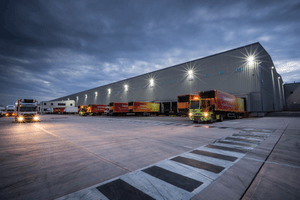This article is from the Australian Property Journal archive
LAND values around a potential high-speed rail (HSR) network along the east coast may rise by up to $140 billion, and the uplift could be used to help fund the project, according to the UNSW’s City Futures Research Centre.
A high-speed rail network along the east coast stretching as far as from Brisbane to Melbourne has been considered in various forms over the years. Opposition leader Anthony Albanese last month pledged to create a High-Speed Rail Authority should Labor win the federal election, providing $500 million to start corridor acquisition, planning and early works for fast rail connections between Sydney, the Central Coast and Newcastle.
A federal government report in 2013 examined a high-speed rail network linking Brisbane, Sydney, Canberra and Melbourne running 1,748 kilometres that was then priced at $114 billion and would take 45 years to deliver.
The High-Speed Rail Value Uplift: Preliminary Investigation Report from the UNSW City Futures Research Centre suggests adopting policies that funnel economic growth from the HSR network towards offsetting costs would see taxpayers share the benefits of land value increases, while reducing the pressure on governments to fund it.
Value capture initiatives would include betterment levies, developer charges or taxes on property transactions.
The report estimates the land surrounding a number of stations along the proposed line would see an uplift from $48 billion to $140 billion. The projections incorporate infrastructure-related uplift for existing residential properties from improved accessibility and planning-related value uplift from land rezoned to residential use around the stations.
“There are a lot of opportunities around the HSR for Australia to build stronger connectivity between cities and inject significant wealth and job opportunities into the regions. The numbers in the report confirm and help quantify that considerable potential,” said Professor Christopher Pettit, Director of UNSW City Futures Research Centre, who conducted the research alongside Will Thackway and Reg Wade through the Value Australia project, which has received funding support through the federal government’s Cooperative Research Centre Project program.
Value uplift from improved accessibility was calculated by applying a value uplift coefficient, based on international case studies, on the total value of existing residential dwellings within the catchment area of proposed regional stops. Value uplift from planning control changes was calculated by subtracting development costs from each area’s expected new dwelling values to obtain the residual land value per new dwelling. The projected value for each area was then multiplied by a range of population growth scenarios to get the final figures.
Pettit said he expects the values to be a conservative approach to estimation and that the total value uplift could actually be higher.
“This is while still factoring in a profit for the developers after all the external costs, including stamp duty, legal fees and building costs.”
Value capture has been used to fund major rail projects abroad including the Crossrail project in the UK, in which the Greater London Authority implemented a Business Rate Supplement, which is expected to generate £4.1 billion ($7.7 billion), contributing substantially to the project’s total cost of £14.8 billion ($27.9 billion).
“If you were to capture a substantial proportion of this value uplift, it could pay for a huge amount of the HSR,” Pettit said.
“You would be looking at tens of billions of dollars just from the residential value uplift alone, without even factoring in commercial, industrial and other beneficiaries.”
Some of that value capture could also be used to invest into housing affordability schemes.
The report recommends further research be conducted into the use of value uplift financial instruments, the formulation of a national settlement plan, and creation of a national cities institute to ensure the maximum benefits realisation of a HSR network across Australia.





